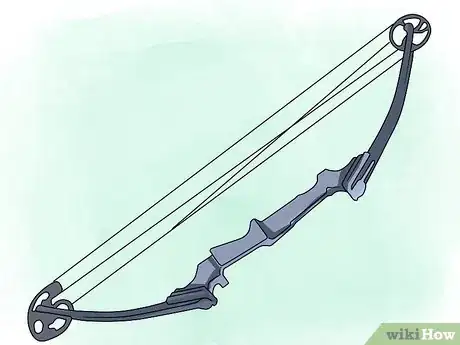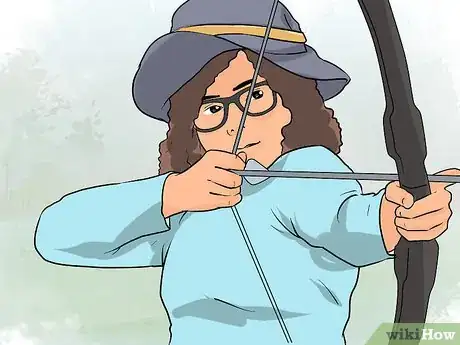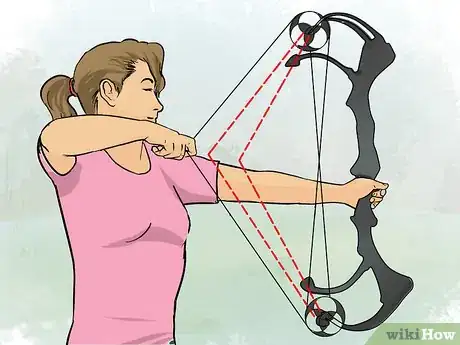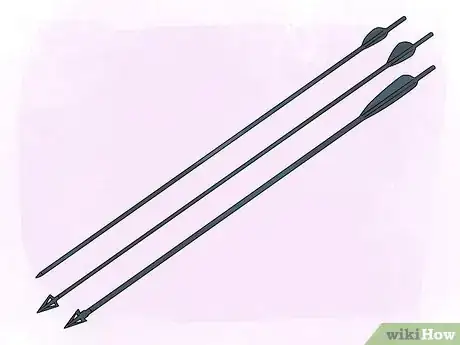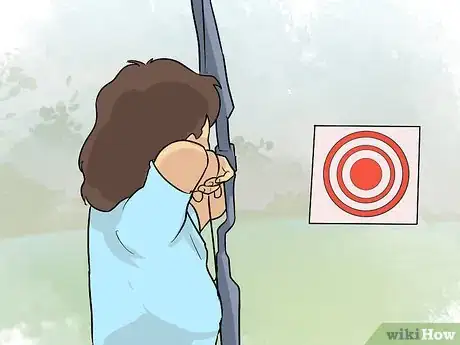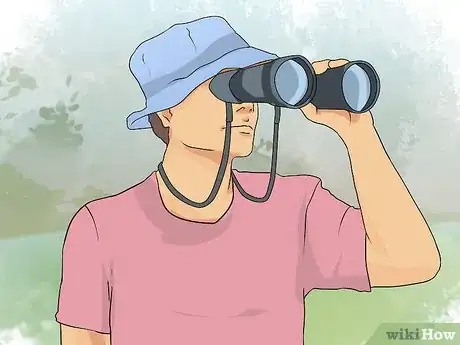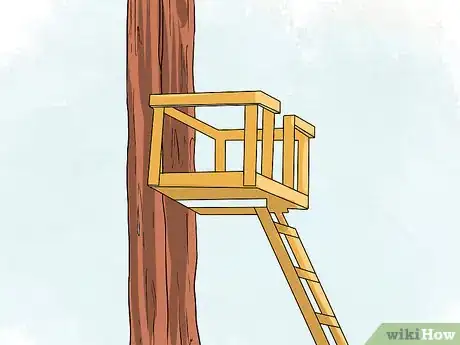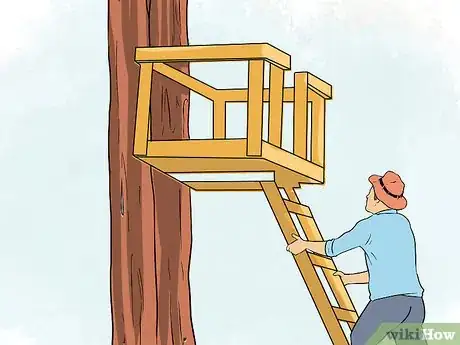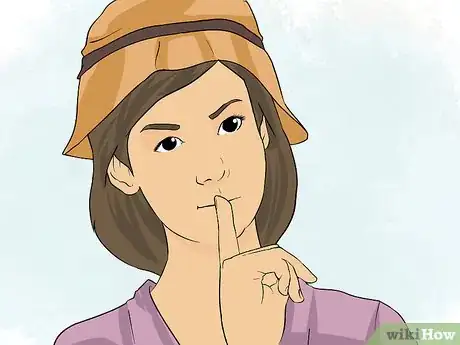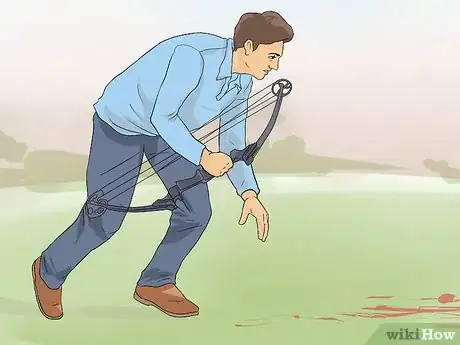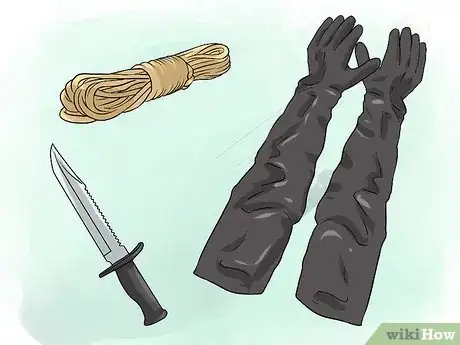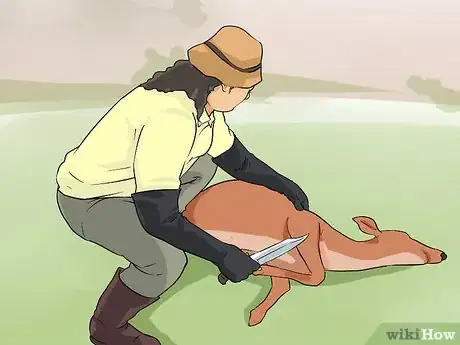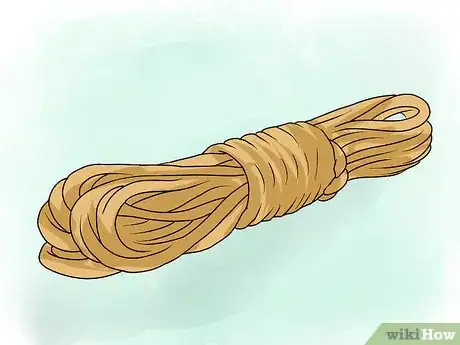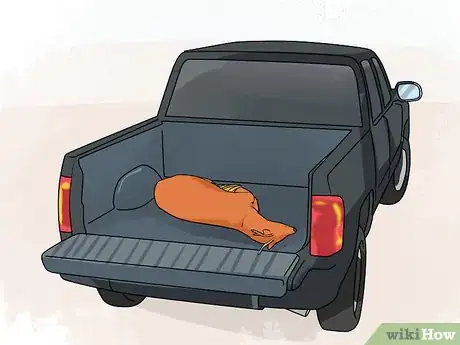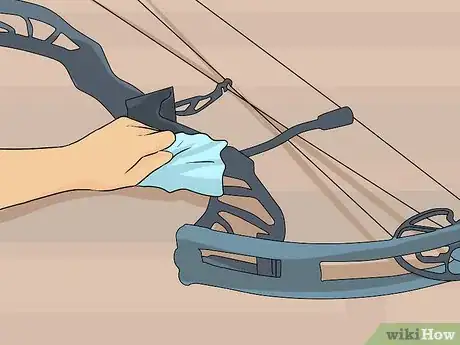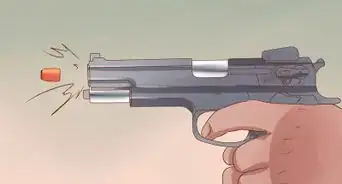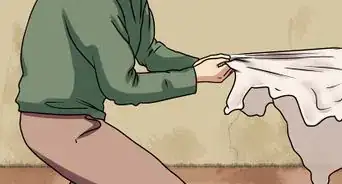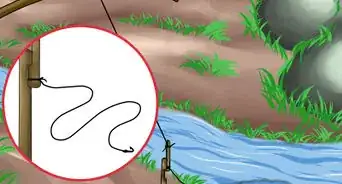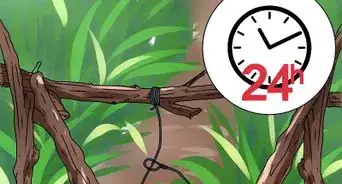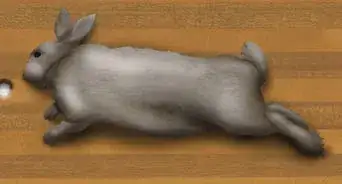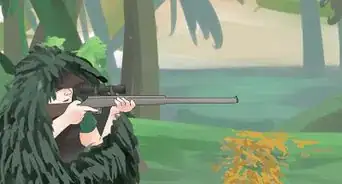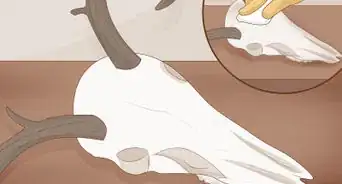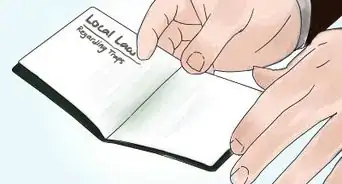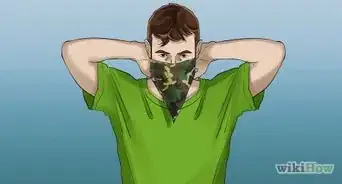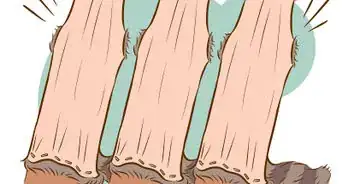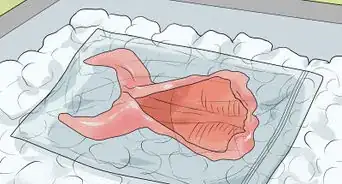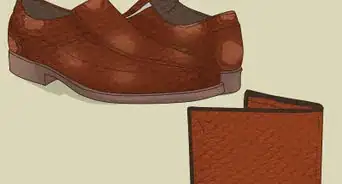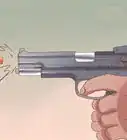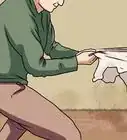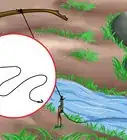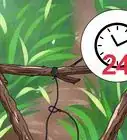This article was co-authored by wikiHow staff writer, Amber Crain. Amber Crain has been a member of wikiHow’s writing staff for the last six years. She graduated from the University of Houston where she majored in Classical Studies and minored in Painting. Before coming to wikiHow, she worked in a variety of industries including marketing, education, and music journalism. She's been a radio DJ for 10+ years and currently DJs a biweekly music program on the award-winning internet radio station DKFM. Her work at wikiHow supports her lifelong passion for learning and her belief that knowledge belongs to anyone who desires to seek it.
There are 8 references cited in this article, which can be found at the bottom of the page.
This article has been viewed 32,797 times.
Learn more...
Bow hunting is using archery to kill game animals in the wild. The most popular game is deer. Countries have different regulations and rules for hunting that must be followed. Even within the same country, states and provinces often have individual rules you must follow. Before you decide to hunt, be sure to learn all of the necessary legal information for hunting in your area.
Steps
Choosing a Bow
-
1Start with a compound bow.[1] This type of bow is much easier to use than the traditional longbow and recurve bow, which makes it perfect for a beginner. You’ll gain skill with it much faster and, with a little practice, be shooting this bow quite well in a couple of weeks. Compound bows are more accurate than traditional bows, and also have better distance and velocity.[2]
- As a beginner, buy a used bow.[3] Check out the used selection at your local sporting goods shop. Look on eBay, as well.
- You should be able to find a decent used bow for about $50 to $150.
- Make sure you buy a bow that is legal to use for hunting, per your local regulations and permit limitations.
-
2Choose the proper orientation.[4] Bows come in right-handed and left-handed versions. Use your dominant eye to determine what orientation you need, not your dominant hand. When holding a bow, which is more comfortable – using your left eye for aiming (closing the right eye) or vice versa? If it’s your left, get left-handed bow. If it’s your right, get a right-handed bow.
- Some people shoot with both eyes open. In this case, you could use either orientation.
- However, you probably still favor one eye over the other when aiming or squinting to see something far away. The one you tend to favor is your dominant eye.
Advertisement -
3Select the right draw weight and draw length.[5] Draw weight, which is the weight of resistance when you pull back the bow string, must be considered. The higher the weight, the harder it is to pull back.[6] Forty-five pounds is the minimum weight it takes to kill a deer. Anything lower will only wound them. Fifty to seventy pounds is the recommended weight for deer hunting. Draw length is another factor. The right draw length is when the bow brings the string about even with your mouth when it’s fully drawn.
- Many bows will be adjustable to accommodate an arm length of 28 to 30 inches, which is the average for an adult.
- If you buy your bow brand new, the seller will most likely set the bow up for you, customized to what you need.
- Keep in mind that having your bow set up will cost a few hundred dollars on top of the bow price.
-
4Pick the appropriate arrows.[7] There are 4 arrow types used with compound bows – aluminum, carbon, aluminum with a carbon core, and carbon wrapped around an aluminum core. The carbon variety tends to be more durable and lighter, which means it will travel faster. However, an aluminum arrow works better if you are using broad heads. A broad head is a point you can attach to the tip of your arrow. It has several very sharp blades affixed to it, which will enter your prey without causing a lot of tissue damage or bruising.
- There are several other factors to consider when choosing arrows. If you’re a beginner, you might have some trouble figuring out what’s best.
- Seek advice from an expert at an archery shop about the best arrow for you.
-
5Practice.[8] Set up a target in your backyard (or in some other open area) to work on your aim. Sporting goods stores often sell targets that are shaped like the game you’re hunting, which can be helpful. You should spend at least a couple of weeks practicing your aim before hunting in the field. Consistency in form is one of the most important factors in archery. When you hit your stride and start hitting your targets more often than not, try to shoot with the same form every time.
- You will need to practice shooting your bow while sitting, as well, since in most cases you will be sitting up in a tree stand while hunting.[9]
- If you plan to use broad heads on your arrows, you need to practice with them once you get the hang of shooting.
- The broad heads add weight to the arrows, which means you’ll need to adjust your form to get the same trajectory as before.[10]
Hunting Deer with a Bow
-
1Scout early.[11] Most people do their hunting on leases, since these large areas are set aside for lawful hunting. After you choose your hunting location, begin scouting the area months before opening day and do it frequently. You are looking for areas that are high-traffic for your chosen prey, which is usually deer, so you should be out scouting frequently.
- Look for evidence that deer frequent the area. When you find a good location, set up your tree stand or deer blind in this area.
- Signs to look for while scouting are droppings, tracks, deer trails, and antler rubs and scrapes.[12]
-
2Place a tree stand in your chosen location. Once you’ve settled on an area that deer are frequenting, you’ll want to set up your tree stand within good range. Twenty yards or closer is recommended. Choose an appropriate tree for the stand, which is at least eight inches in diameter and fifteen feet high.[13] If there’s not a good tree for a stand, you can set up a ground blind. You’ll want to do this at least a month before hunting season opens, so that the deer will get used to it being there.
- The best time to set up a tree stand or blind is between noon and 3pm. This window is when deer are least likely to be around.
- Trim some of the trees around the area to clear a few shooting lanes for yourself. Make sure you clear shooting lanes for any possible direction a deer might approach.
-
3Arrive at your deer stand before dawn.[14] On a hunting day, you need to get settled in your stand or blind before daylight. Hunt from dawn until about 11am. Deer are least active between 11am and 3pm, so take a break in the middle of the day. Be settled back into your stand before 4pm and hunt until it gets dark.
-
4Be quiet and still. Hunting involves a lot of waiting. While in your stand, you need to be very still and quiet, since deer can hear very well. The goal is to spot them before they spot you. When a deer approaches, you need to be absolutely silent. You will have about two or three seconds to shoot before it becomes aware of your presence and hears the shot.
- You will have one chance to get the deer. If you don't hit the animal, the sound of your shot will cause the deer to flee.
- Before you shoot, aim just behind the deer’s front leg. If you hit the mark, your arrow will penetrate the lungs of the deer, killing it instantly.
-
5Follow the blood trail and secure your kill.[15] If you don’t kill the animal immediately, you will have to track your prey by following its blood trail. Wait at least 30 minutes before you start looking. In most cases, a wounded deer will lie down within a couple hundred yards of where it was shot.
- If you follow it too soon, the fallen deer might get spooked and still have the energy to take off again.
- The chances of finding your game decrease substantially if this happens.
Dressing the Animals
-
1Be prepared for field dressing. [16] Dressing game is a messy task, so you need to be prepared. Buy a dressing kit and bring it with you on the hunt. You’ll also need plastic gloves that go up to your shoulders, a very sharp knife, rope and a large light or lantern (in case you have to dress your game after dark).
-
2Clean and dress your kill in the field.[17] Field dressing involves removing the animal's internal organs. It needs to be done as quickly as possible to prevent bacteria growth on the meat, which is why it’s crucial to do it in the field. The faster you do it, the better the meat quality will be. It will also make the animal lighter and easier to transport.
- Avoid jerking the arrow out of the deer before you begin. This can create a mess.
- As you clean and dress the animal, you will be cutting deeply into it. Remove the arrow when it becomes easily accessible.
-
3Use rope to secure the deer for transporting. Put the deer’s head between its front legs and then tie the front legs together. Make a loop with the rope and then tie the free end to the deer’s front legs. This will make it easier for you to pull it to your vehicle or camp.
-
4Transport the deer to your home or camp.[18] Once there, hang the deer up so that it isn’t touching the ground. Most hunters recommend that you hang it from its head. This will allow the blood to drain out. Rinse out the body cavity of the deer well with a water hose. Skin it, rinse it again, process the venison, and place it in a freezer that is as close to 40° F (4° C) to prevent spoilage.
-
5Clean and maintain your bow. After a hunt, look your bow over for any damage. Wipe it down with a soft microfiber cloth to remove any dirt or grime. During peak hunting season, coat your bow's string and synthetic cables with soft bowstring wax once per week. Regularly coat your axles with a high quality lubricant.
- When not in use, keep your bow put away safely in its case.
- Keep your bow away from any heat sources, which can damage it.
Community Q&A
-
QuestionWhat do you shoot out of your bow?
 Michael ManleyCommunity AnswerYou shoot arrows from your bow. Arrows must be selected based on your individual draw length, draw weight, and the IBO speed rating of your bow. It can be fairly technical, so do plenty of research.
Michael ManleyCommunity AnswerYou shoot arrows from your bow. Arrows must be selected based on your individual draw length, draw weight, and the IBO speed rating of your bow. It can be fairly technical, so do plenty of research.
References
- ↑ http://www.bowhuntingbasics.com/getting_started.htm
- ↑ http://pickabow.com/compound-bow-buying-guide/
- ↑ https://www.bowhunting.com/bowhunt101/bowhunting-basics/
- ↑ http://www.bowhuntingbasics.com/getting_started.htm
- ↑ http://www.bowhuntingbasics.com/getting_started.htm
- ↑ http://pickabow.com/compound-bow-buying-guide/
- ↑ http://www.bowhuntingbasics.com/arrows.htm
- ↑ http://www.bowhuntingbasics.com/arrows.htm
- ↑ http://www.bowhuntingbasics.com/the_hunt.htm
- ↑ http://www.bowhuntinginfo.com/Articles/BowHuntingDeer/BowHuntingSuccess/tabid/150/Default.aspx
- ↑ http://www.bowhuntinginfo.com/Articles/BowHuntingDeer/BowHuntingSuccess/tabid/150/Default.aspx
- ↑ http://www.bowhuntingbasics.com/the_hunt.htm
- ↑ http://www.bowhuntingbasics.com/the_hunt.htm
- ↑ http://www.bowhuntingbasics.com/the_hunt.htm
- ↑ http://www.bowhuntingbasics.com/the_hunt.htm
- ↑ http://www.bowhuntingbasics.com/field_dressing.htm
- ↑ http://www.bowhuntingbasics.com/field_dressing.htm
- ↑ http://www.bowhuntingbasics.com/field_dressing.htm
